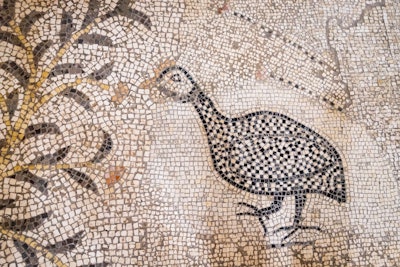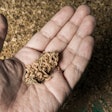
“The egg is, we believe, unique, it is the oldest surviving example of an inadvertently preserved avian egg found in the U.K. and we do not know of any equivalent globally.”
The claim was made by Douglas G. D, Russell, Senior Curator: Birds Eggs & Nests at the U.K.’s Natural History Museum, in relation to a 1,700-year-old intact Roman egg that was found as part of archaeological investigation near Aylesbury, in Southeast England.
What sets the egg apart is that it is not simply a shell. The egg still holds its contents, in liquid state, but nobody will be cracking it open – for a variety of reasons –anytime soon.
The ancient egg, thought to be a hen’s egg, hails from a place called Berryfields, west of Aylesbury, where archaeological excavations were carried out between 2007 and 2016. The area had been a site of human activity from the Neolithic through to the late medieval period and was important during the Roman occupation of Britain.
During the excavations, a large, waterlogged Roman pit came to light, which, when excavated, gave up a number of items, including a cache of eggs. Two broke on being removed from the pit, but one survived and interest has sprung anew in this time travelling survivor.
According to Russell, the National History Museum does hold older eggs – mummified sacred ibis eggs from Egypt – but these were intentionally preserved. The Berryfields egg is more of a lucky survivor.
What might lay within?
Finding an intact egg from so long ago, of course, raises all sorts of questions, not least of which is what might be inside.
To help answer this, Dana Goodburn-Brown, of conservation company DGB Conservation, took the egg for a Micro-CT scan.
She explained that it was an exciting moment when an air bubble was first seen inside. The decision was then taken to turn the egg to see if the bubble would move … which it did.
However, what’s inside the egg remains somewhat of a mystery as the yolk and albumen will have largely decomposed.
Food for the gods
How, exactly, did three eggs end up in a waterlogged Roman pit?
The pit had been originally used to extract water for malting and brewing. Once this function ended, it was used for ritual purposes. Along with the basket of three eggs, various other objects, including coins, ceramic jars, and basket, were found, all left as offerings or food for the gods. Placed into the pit between AD 270 and 300, the eggs and other items were preserved in a layer of soft mud.
Will we ever discover more about this ancient Roman egg offering? Perhaps, sadly, no. There are no formal plans for further investigation and no funding. No funding that is, unless some curious reader from the egg industry might be feeling particularly generous and be as keen as I am to find out more.


















